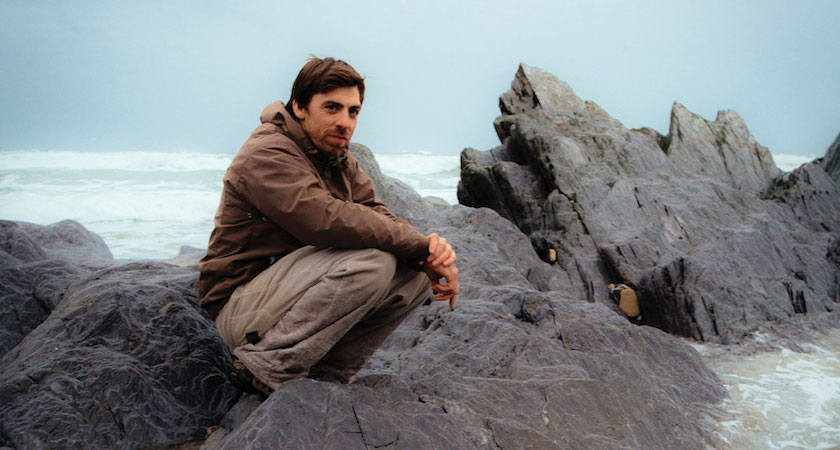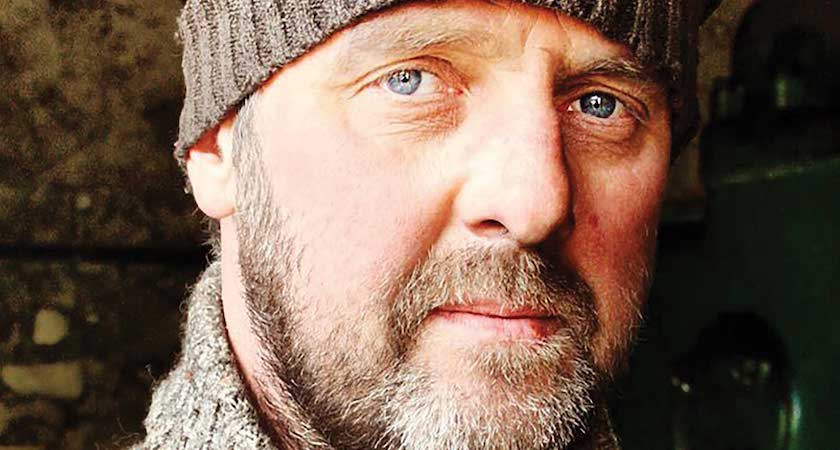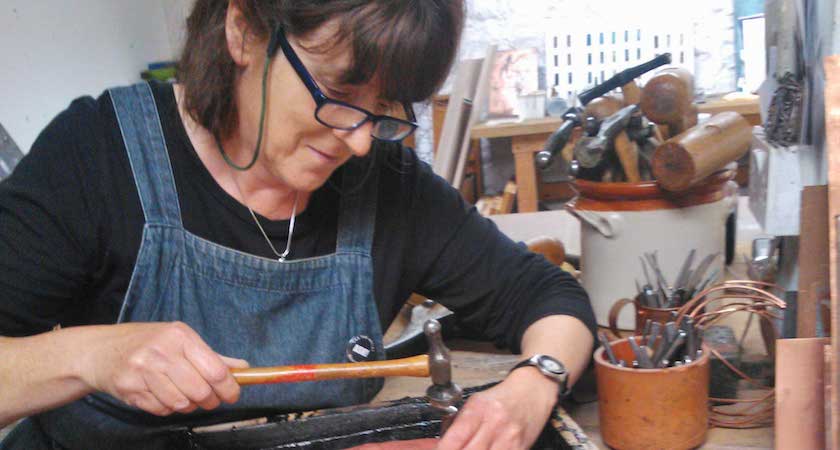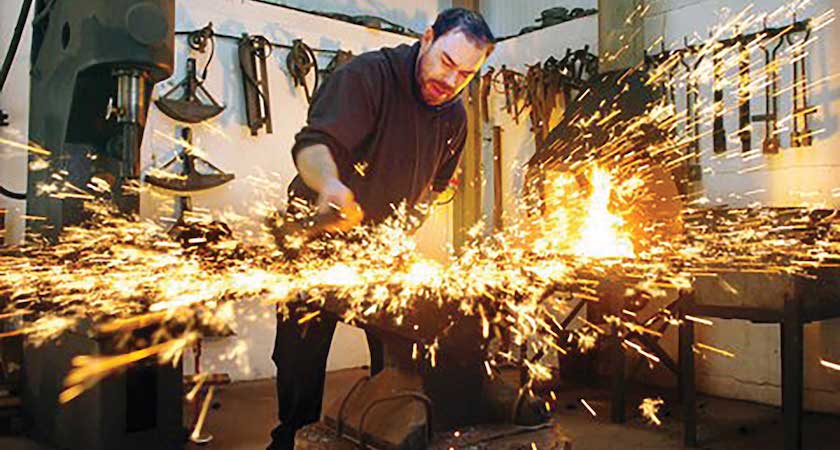IS metalsmithing a thing of the past in Ireland?
Five talented and contemporary artists are displaying their work in a unique exhibition that is home to all things metallic in a bid to prove it's not.
CRUX - A Dialogue in Metal is an engaging exhibition displaying some of the finest Irish metal work with a variety of artistic styles coming together to celebrate those making a contribution to Irish arts.
The exhibition, led by The Design & Crafts Council of Ireland, features work by artists Gunvor Anhøj, Michael Calnan, Moss Gaynor, John Hogan and Jane Murtagh.
Having opened in Co. Clare in March, it continues its run at the Custom House Studios in Westport, Mayo until August 7.
Here, we meet the artists involved...

Moss Gaynor - Sculptor
What inspired your switch from the pharmaceutical/agricultural industry to sculpture? Is it a career decision you’ve ever regretted?
I had always been more interested in design and making objects from a young age. Whilst working in industry opened my eyes to the world of business large and small I was never entirely happy. I can't say I regret the choices I made, on a personal level I find my work very rewarding...from a pure financial point of view, I would love a little more stability - as would my long suffering (very supportive) wife.
Has the beauty and creativity of West Cork, where you're based, influenced your work and how?
More on a subconscious level, it's hard to not be inspired by such a dramatic landscape on the edge of the Atlantic. Its easy to get lost in a good way. The West Cork area has been and continues to be a huge draw for artists and creatives of all types... meeting and befriending such people has had a huge positive effect on my work.
Your devotion to the sea is clear – how do you incorporate this in your work?
Again more on a subconscious level. Spending so much time on the Atlantic seaboard all year round exposes one to amazing sounds, sights and textures which filter into three dimensional work. There are subtle references to these scattered throughout all my work.
Sculpture aside, you’re a surf fan, where are the best spots in Ireland to catch a wave?
Ireland is a fantastic place to surf. The best and most consistent place to surf would be the north west region of Ireland. Fortunately for us southerners the kingdom of Kerry is magic on its day.
However I am always drawn to the place that I learnt to surf - Incheydoney in West Cork. I was fortunate to have a sculpture commissioned there a few years ago. Its a beautiful place to surf and only six minutes from my door.

Gunvor Anhøj - Artist/Blacksmith
Do you think your work has been influenced by the mix of the Irish and Danish cultures that you have been exposed to? What are the main similarities and differences between the two?
Without generalising, comparing cultures is tricky. I spent the first half of my life in Denmark and the second half between England and Ireland. I think anyone who lives abroad will agree that it does perhaps feel a little as if you have a blank canvas available.
Being exposed to two or more cultures as well as languages can cause you to feel that you don't belong to either - with age I feel I'm increasingly mediocre at both languages for example - or you can just conclude that you belong to yourself. The sculptural work I have created for exhibition CRUX is an honest expression of this.
Wicklow is now home. You live and work in Russbourogh House – what’s it like to live in one of Ireland’s most historic homes?
Our little family live in one of the caretakers apartments in the Russborough demesne. Its a characterful and rustic accommodation which we love. Our children are very lucky to grow up here, the surrounding forests are magical and there's great adventures to be had after hours.
Our forge is a short walk past Russborough House itself which also holds a most spectacular view of Wicklow's rugged mountains - commutes don't come nicer than that!
You’ve trained as a horticulturist and have ploughed fields the old way – by horse and one-furrow plough – tell us about that experience and how it led to your career in sculpture.
I didn't follow a conventional career path. I left school at 15 and when choosing the apprenticeship in horticulture the workplaces I sourced were quite eccentric, I guess I saw it as a chance of adventure as well as being intrigued by traditional crafts.
Over that time my interest went from the craft of growing food organically to the craft of making and I started training as a blacksmith at the age of 24. Prior to that the closest I got to engaging with blacksmithing was the time I worked on a Norwegian farm, a small-holding that used workhorses for all field work and also had a herd of cows which we milked by hand.
I loved ploughing and other field work. You totally had to adjust to the speed of the animal and was quite literally engaged with the soil, walking in the furrow cut by the one-furrow plough.
On one such occasion the tip of the plough shear actually broke and it was the realisation of no spare parts being available - as well as there being no local blacksmith willing or able to repair it - which led on to me considering picking up the skills.
With this background my sculptural work has definite roots in a making tradition as opposed in conceptualism. As esteemed art critic Brian Fallon said as he opened our exhibition CRUX at the previous venue: 'Craftsmanship is the root of art - every good craftsman isn't necessarily an artist, but every great artist has to be a great craftsman.'

Michael Calnan - Contemporary blacksmith
You studied on Hereford College here in Britain. What are your memories of being Irish in Britain during that time and has it influenced your work?
I studied in Hereford College of Art and Design 99/2001. The college taught forging of metals through a design based course, a big facility that was in existence for over 40 years then.
It attracted lots of people of different nationalities in turn offered a richness in culture that was interesting and somewhat contributed in an influence within my learning.
Engaging with this ancient art during the time of the millenium felt right for me. People were concerned with their laptops imploding at the stroke of midnight new years eve 1999, I was investing in knowledge for a future of creativity that involved working metal essentially the same way it had been done 2,000 years ago. I got a kick out of this.
You’re married to Gunvor Anhøj, who is also involved in this exhibition – have you both collaborated on other projects in the past? Are there benefits or challenges in this?
We share a studio and work mainly on our own ideas. Working collaboratively on a few occasions has been good. Even when we are working solo there is normally a critique of ones work by the other.
Your background is in glass work – tell us about that. Why did you transition to the metal world?
Both materials have similar properties of plasticity and both are hot worked.
What message do you want to communicate via your work?
No message to communicate really. If the work resonates something to the viewer, that's good.

Jane Murtagh - Art metalworker
What first made you want to work with metal?
Walking into the metalwork room in Dun Laoghaire School of Art in the mid 70s, smelling the dust full of filings, the feel of metal, the sound of the torch, the first blow of the hammer - heaven. This also brought back very strong memories of visiting silversmithing workshops in Dublin as a child.
You’re passionate about art education, do you think enough is being done in Ireland to encourage the next generation to take an interest in the creative arts?
Yes, I do see massive input from both Design Crafts Council of Ireland and The Arts Council into primary and post primary education. Though being an artist I want more. The visual arts are a great path to learn about life and the world we live in. I wish I could have learnt maths and history through art.
Part of my work is developing a narrative, researching historical events and people that made a difference. You can never stop learning and doing it through art is electric. Young people must be exposed to the makers and see the raw material ‘become’. It may trigger a future path not to mention a visual awareness, vital for living.
Which young Irish artist or talent are you particularly excited about at the moment?
I can't really give this the answer it deserves. I suppose I look at artists of my own vintage most. I adore the work of the sculptor David Nash, his massive charcoal drawings and charred wood sculptures in Kew Gardens a few years back.
Donard Teskey, Vera Klute, Eilis O’Connell, John Shinnors, Alice Maher, Grainne Cuffe, Charles Tyrrell to name but a few who I would travel to see and come away fired up and of course my fellow artists in this exhibition.
John Hogan - Artist/Metalworker
Why do you think it’s important to restore the rich heritage of ironwork we have in Ireland?
Well I think it's the responsibility of people with the capabilities in a craft to do their up most to preserve, restore and evolve that craft. Obviously it is important to the rich heritage of ironwork in this country for future generations, but it also needs to evolve in order to survive and that is one of the things this exhibition aims to do.
It takes the traditional skills of forging metal and fuses it with contemporary design.
What is your favourite metal to work with and why?
Mild steel, it's not as beautiful a material as bronze copper or stainless steel but it's cheap and forgiving a (bit like myself!)...but in the right hands can be turned into something beautiful.
How would you explain your work to someone who does not know much about blacksmithing?
Well it's basically the hot forging of metals fused with contemporary design. With regard to my work personally. I would take a lot of influence from nature and my work would be art nouveau in style. I use the traditional techniques of a blacksmith as well as modern techniques of a metal fabricator to create functional and sculptural ironwork.


